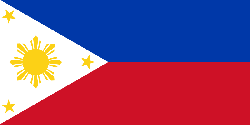 Internationally acclaimed local network GMA produced an in-depth report on the effects of global warming in the Philippines. Many may wonder about the recent changes in climate and frequent occurrences of certain diseases, but now the cause of all these has been answered in this "must-see" documentary. The damage on nature has been done, and its effects are inevitable. Now we must face the harsh reality: Nature is turning against us.
Internationally acclaimed local network GMA produced an in-depth report on the effects of global warming in the Philippines. Many may wonder about the recent changes in climate and frequent occurrences of certain diseases, but now the cause of all these has been answered in this "must-see" documentary. The damage on nature has been done, and its effects are inevitable. Now we must face the harsh reality: Nature is turning against us.Gathering all the experts in the fields of marine science, agriculture, weather and geophysics, the group (including Nobel Peace Price winner Dr. Josefino Comoso, Senior Research Scientist, Nasa) tackled the tell-tale signs of global warming that the Philippines is currently experiencing.







 Based from what I understand in that documentary, we can group the signs into four: Climate Change, Epidemics, Rise in temperature, and Rise in Sea Level.
Based from what I understand in that documentary, we can group the signs into four: Climate Change, Epidemics, Rise in temperature, and Rise in Sea Level. Global warming changes the climate in such a way that storms are often to strong, stronger that previous years. We've experienced this just recently: Storm signals reaching 4, strong winds and large amount of rain fall.
Global warming changes the climate in such a way that storms are often to strong, stronger that previous years. We've experienced this just recently: Storm signals reaching 4, strong winds and large amount of rain fall. The change in the cycle of weather brings about certain diseases, the number of affected individuals rising to an epidemic level. Dengue is one of the most popular and typical of this type. A certain barrio in the Philippines even suffered from schistosomiasis, or "snail fever", due to an increase in the population of snails in their river.
The change in the cycle of weather brings about certain diseases, the number of affected individuals rising to an epidemic level. Dengue is one of the most popular and typical of this type. A certain barrio in the Philippines even suffered from schistosomiasis, or "snail fever", due to an increase in the population of snails in their river.
Due to the collection of carbon dioxide in the atmosphere, it creates what they call "Green House Effect" wherein the Earth's heat is trapped within our atmosphere rather that being radiated in space. In effect, the Earth's temperature is rising. Rivers dry, plants and crops die of drought.
 The increase in the Earth's temperature affects the temperature of the bodies of water. Coral bleaching due to an increase in the temperature of the sea, is recurring more frequently that corals find short a period of time for their recovery. If this happens, marine life will suffer as coral reefs are the sea's primary producers in the marine food chain.
The increase in the Earth's temperature affects the temperature of the bodies of water. Coral bleaching due to an increase in the temperature of the sea, is recurring more frequently that corals find short a period of time for their recovery. If this happens, marine life will suffer as coral reefs are the sea's primary producers in the marine food chain. The rise in temperature causes the ice at the Polar regions to melt, causing the sea level to rise. When heavy rain pours, accumulated water will take time before it settles and dry out. In time, low-leveled cities will be submerged in water.
The rise in temperature causes the ice at the Polar regions to melt, causing the sea level to rise. When heavy rain pours, accumulated water will take time before it settles and dry out. In time, low-leveled cities will be submerged in water.But there is still hope. One major solution that the researchers has suggested is the reduction in the burning of fuels. Power plants that use fossil fuels are the biggest contributors of carbon dioxide in the atmosphere, so a reduction in the use of electricity will make a difference in the emission of these power plants. The use of natural and renewable power sources such as sun and wind are also alternative solutions for generating energy rather that burning fuels. If we act now, we can still save our planet. As Dr. Josefino stressed out, “The planet earth is the only entity in the Universe that we know can sustain life and at that, very intelligent life. We don’t want to lose this planet.”





No comments:
Post a Comment